Hydrological and Rainfall Monitoring
Hydrological and rainfall monitoring is one of the most common types of monitoring stations in the field of water conservancy informatization. For project implementers, the key concerns are how to simplify installation, eliminate the hassle of coordinating device interfaces and data protocols, reduce operational costs, and enable remote debugging, maintenance, and upgrades without onsite visits. Our answer is: integration, high modularity, and turnkey delivery!
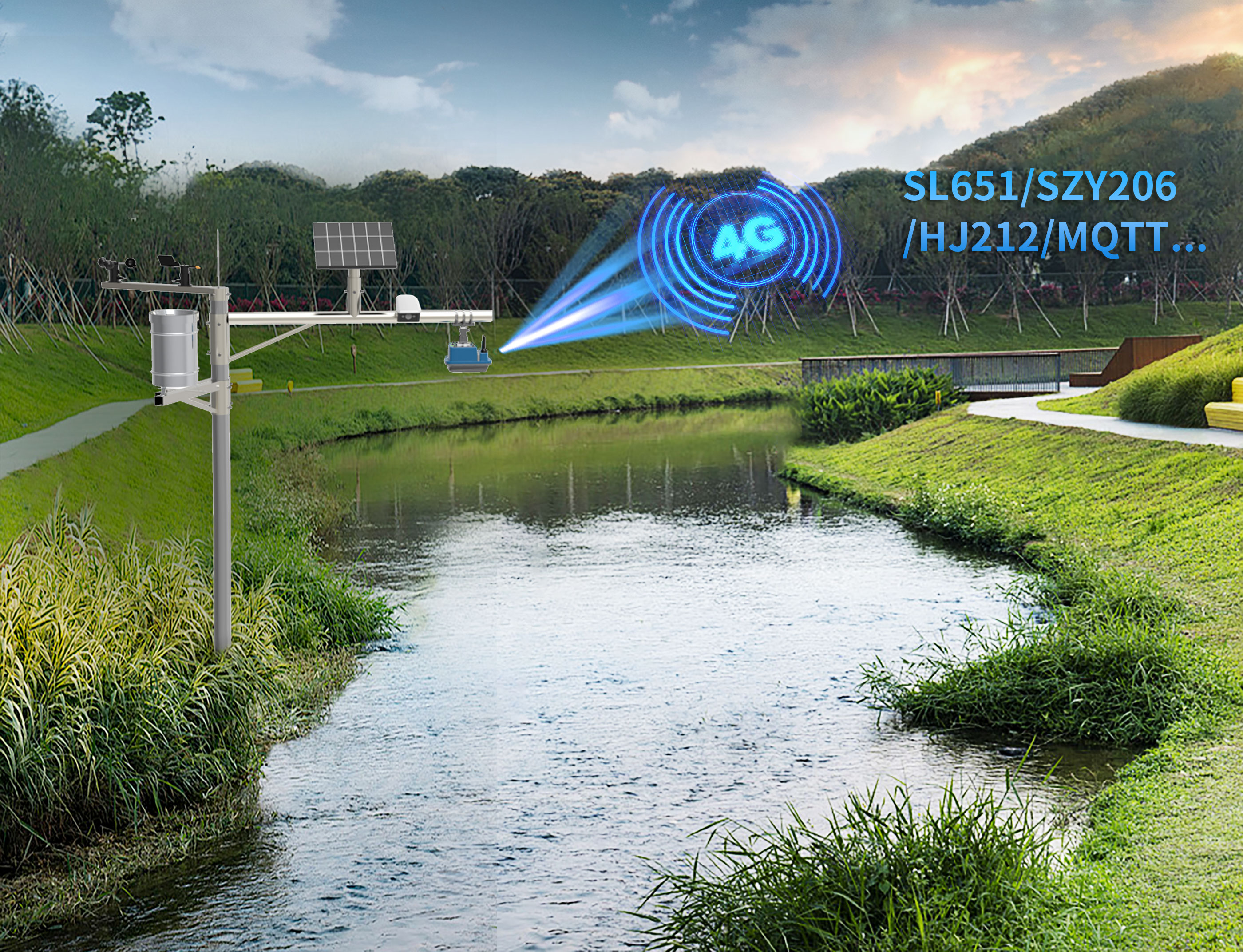
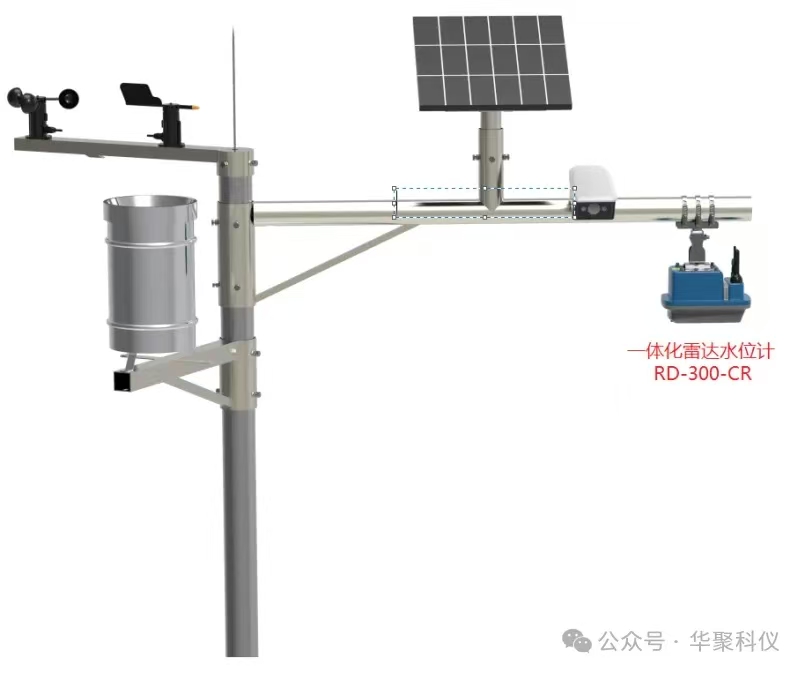
Core Device: Integrated Radar Water Level Gauge (RD-300-CR)
As the central component, the RD-300-CR employs a highly integrated, modular design with built-in functional units:
Solar charge controller
Rechargeable lithium battery (or optional disposable lithium battery)
RTU (GPRS/2G/3G/4G/NB-IoT, LoRa)
RS485/Modbus manager (plug-and-play for multiple sensors)
Image acquisition manager
Bluetooth
Tilt sensor
Ambient temperature sensor
Radar water level gauge (maximum range: 120 meters)
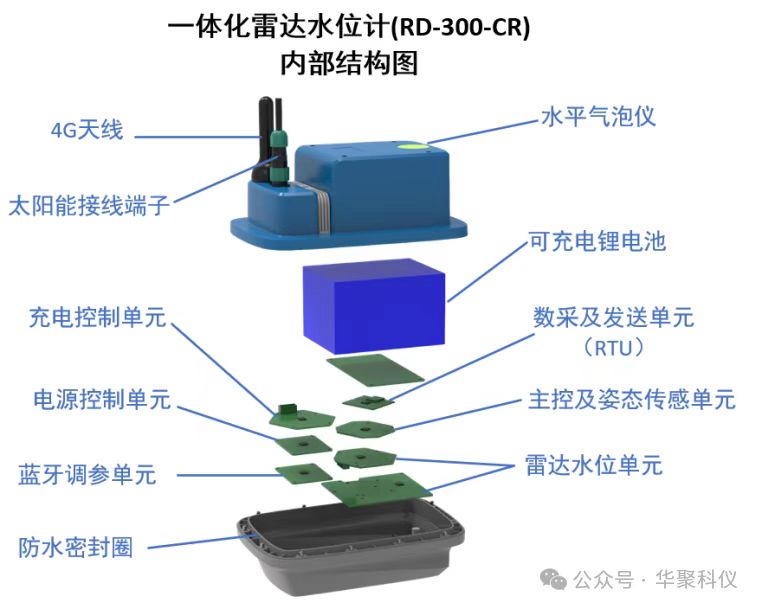
System Architecture
The integrated water level, rainfall, and imaging station comprises:
The Integrated Radar Water Level Gauge (RD-300-CR) as the main control unit, integrating a charge controller, rechargeable battery, power control board, and data acquisition/transmission modules. This unit powers the entire station and manages data transmission.
External extensions including cameras, rain gauges, water quality sensors, and mini weather stations (traditional discrete meteorological sensors are also supported). After collecting data from all external components, along with water level information, the system uploads monitoring data and images to cloud servers in compliance with protocols such as SL651 (Hydrological Monitoring Data Communication Protocol), SZY206 (Water Resources Monitoring Data Communication Protocol), HJ212, MQTT, or custom requirements.
Remote Device Management Platform and Mobile App
A web-based server management platform enables centralized device management, real-time field viewing, data visualization, and statistical analysis.
A mobile app allows users to perform queries, manage devices, and conduct maintenance remotely.
The system supports grid-based, informatized management and can be expanded with additional parameters or control functions as needed.
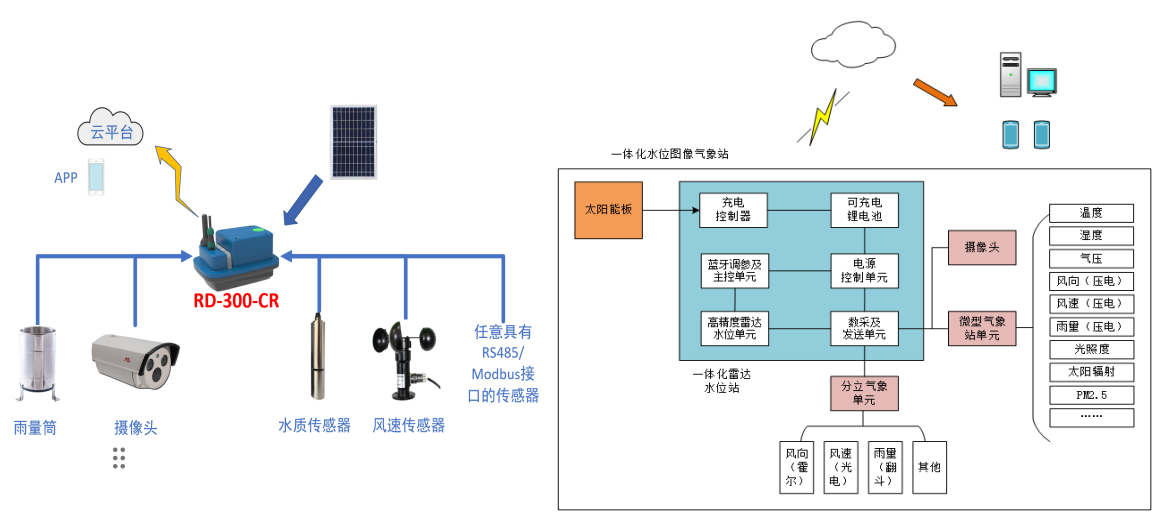
System Features
High integration: Compact, lightweight design for single-pole installation and easy deployment.
Pre-configured sensors: Plug-and-play functionality with quick on-site data configuration.
Image-text overlay: Supports timed, event-triggered, or on-demand data/image uploads.
Bluetooth and remote maintenance: Debug locally via a mobile app or perform remote upgrades.
Web-based management: Streamline data statistics, maintenance, and upgrades through a centralized platform.
Multi-communication protocols: GPRS/2G/3G/4G/NB-IoT, LoRa, etc., with data distribution to at least 4 central stations. Includes data retransmission and compliance with SL651, SZY206, HJ212, MQTT, and custom protocols.
Compact core device: The RD-300-CR integrates RTU, rechargeable battery, and solar controller, eliminating the need for external enclosures and minimizing installation effort.
Non-contact radar water level measurement: Built-in stage-discharge relationships, low maintenance, and immunity to sediment interference.
Robust power design: Reverse-polarity and lightning protection.
Fully waterproof: Designed for harsh outdoor environments.
Parameters
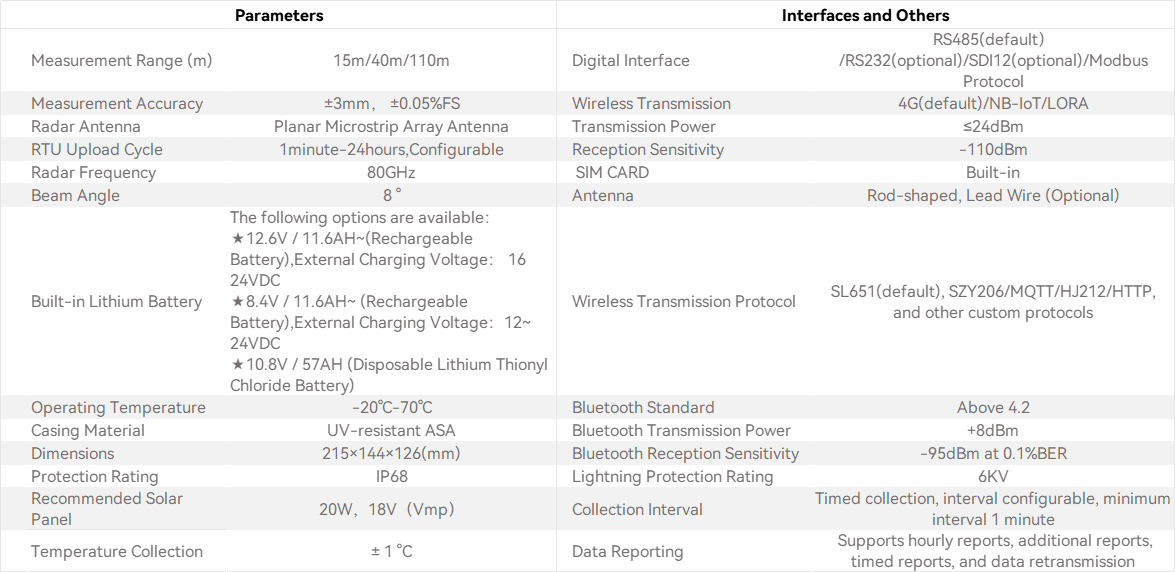
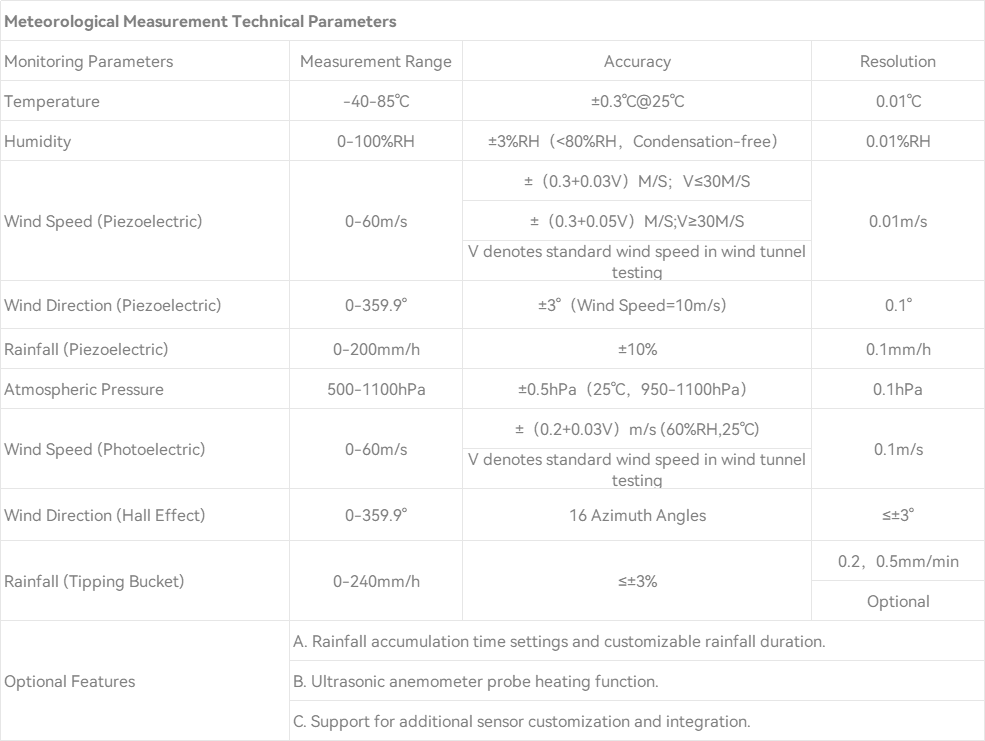
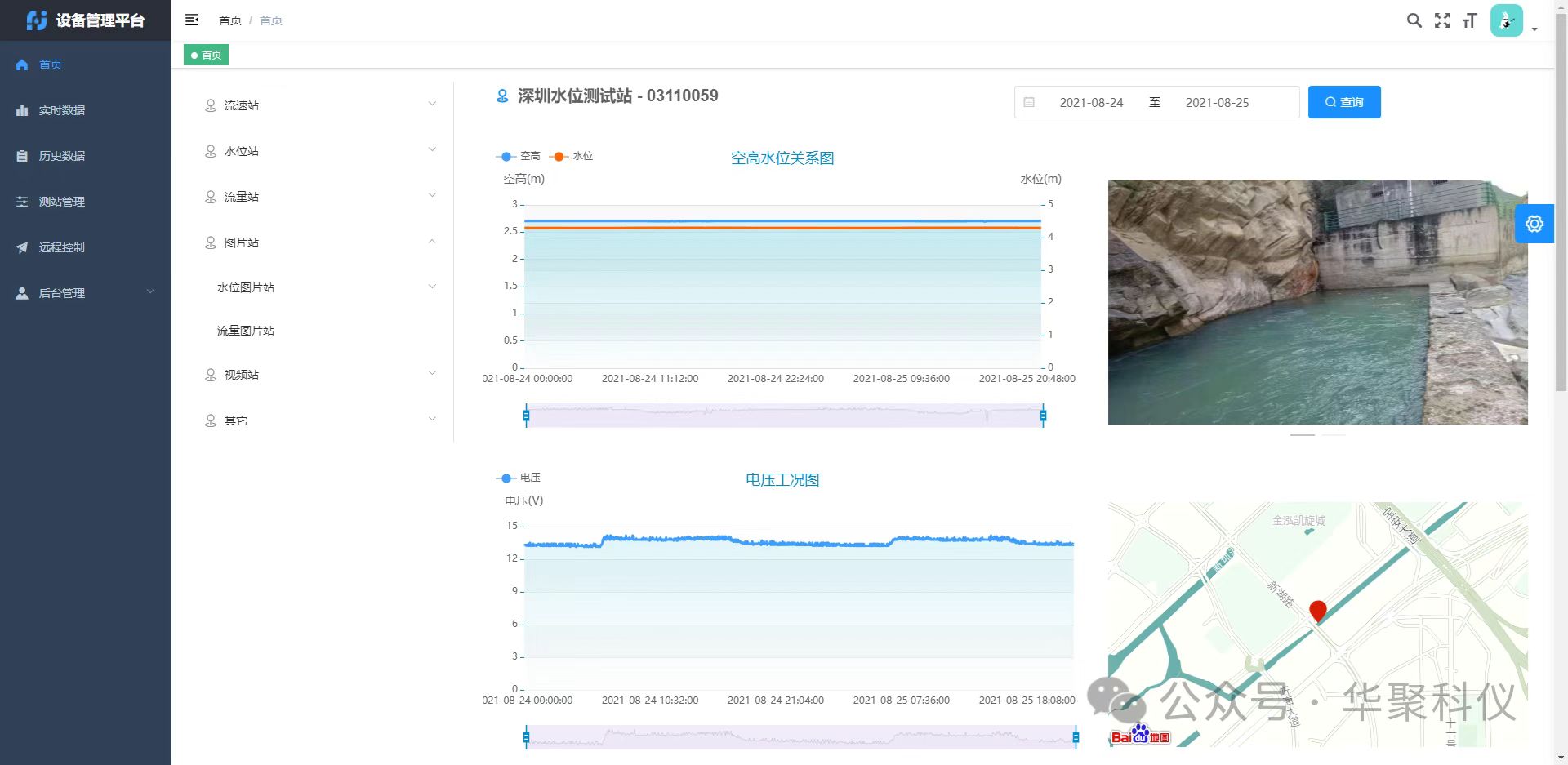 Web-based Server Management Platform
Web-based Server Management Platform  Mobile App
Mobile App
Applications
Rivers, lakes, reservoirs, and flood control (hydrological/meteorological monitoring).
Urban flood and waterlogging monitoring.
Mountainous flash flood warning systems.
Critical area meteorological monitoring.
Project Cases
Farm meteorological data monitoring.
River water level and image monitoring.
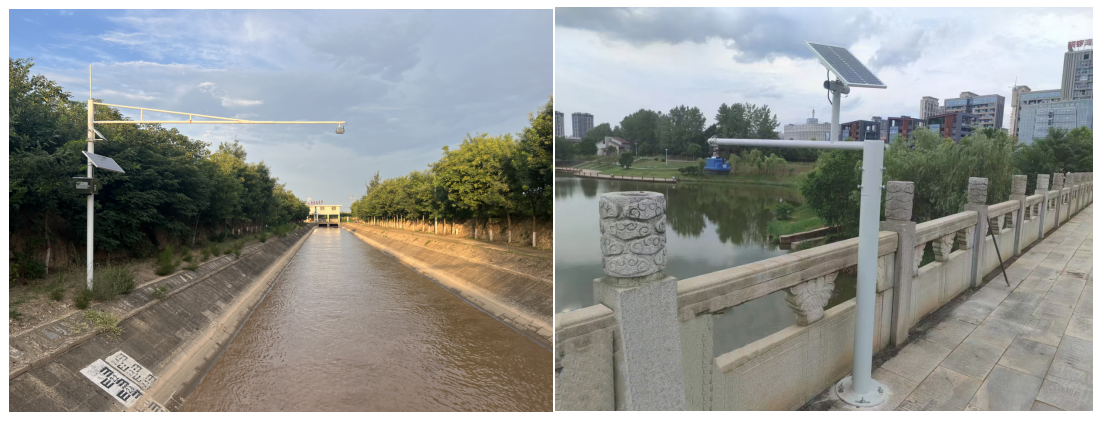
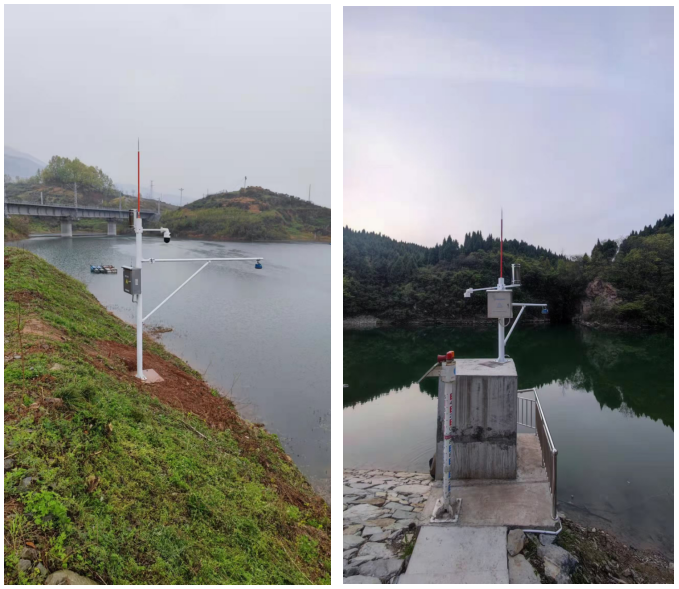
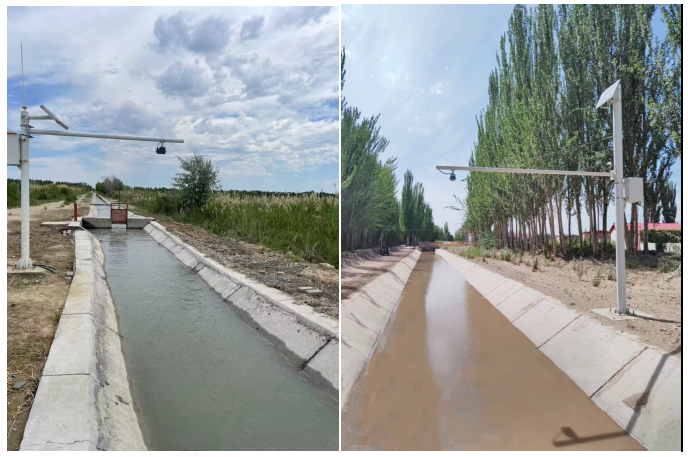
 Return to List
Return to List